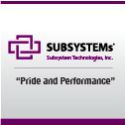
As the managing director of Accenture Mobility, Lisa Mitnick keeps a pulse on all things digital and mobile. In the ever-widening Internet of Things, there’s no shortage of trends ahead – and Mitnick has the inside view of where they’re headed, on a variety of fronts.
“The mobile health revolution has only just begun to take off,” says Mitnick. “We are going to see a lot of growth in the coming years.” Along with insights into digital health solutions, Mitnick recently sat down with WashingtonExec to weigh in on additional areas to watch. “The explosion of connected devices and data is giving rise to the need for new kinds of platforms to manage the Internet of Things,” says Mitnick.
Here, Mitnick shares how companies and government organizations can take advantage of the potential found in the Internet of Things, and how Accenture is leading the way with its new Connected Platforms as a Service, a fully operational IoT platform.
WashingtonExec: How has the Internet of Things/Internet of Everything affected the progress of customers in the healthcare and more specifically the federal healthcare, space?
Lisa Mitnick: The Internet of Things impacts every industry and government is no exception. We are going to see government agencies experiment with and deploy IoT, specifically for healthcare. Solutions such as remote health monitoring can help patients and providers more effectively manage chronic diseases. For example, diabetics and their health care providers can monitor blood sugar levels and receive real-time notifications of changes. These early warnings signals enable timely and cost-effective intervention before there is an emergency, helping to reduce costly hospital stays.
Tracking devices in the form of wearable technologies are also being used to monitor movement of Alzheimer’s patients to help keep them safe. In an effort to curtail readmissions after a hospital stay, providers are starting to send patients home with remote health monitoring devices such as blood pressure cuffs, weight scales and heart rate monitors for early detection of problems before they become critical. FDA-regulated digital health solutions and other personal health monitoring solutions are poised to transform healthcare delivery and our approach to health. This transformation could help save billions of dollars in healthcare costs and at the same time drive better health outcomes.
Telecom companies, retailers and fitness manufacturers are also aggressively moving into the consumer health space through both organic means and merger and acquisitions. The mobile health revolution has only just begun to take off. We are going to see a lot of growth in the coming years.
WashingtonExec: Accenture serves commercial and federal healthcare clients. What are some IoT/IoE solutions you all are using in the commercial space?
Lisa Mitnick: We serve the entire health ecosystem, including payers, providers, pharmaceutical companies, medical device firms as well as federal and state government agencies that provide healthcare services to individuals, corporations and veterans. Across the board we are seeing an increased focus and investment on wellness and coaching programs to get people more fit, reduce stress and drive engagement in their personal health.
Many of our medical device clients are building new connected health solutions to address a wide range of therapeutic areas, including cardiac, radiology, neurology and respiratory. Our research shows that FDA approval of digital health solutions has grown 21 percent from 2010 to 2015 and is projected to accelerate to approximately 30 percent through 2018. Mobile device companies such as Apple and Samsung as well as specialty mHealth companies like Fitbit are revolutionizing how people track and manage their health and fitness.
Telecom companies, retailers and fitness manufacturers are also aggressively moving into the consumer health space through both organic means and merger and acquisitions. The mobile health revolution has only just begun to take off. We are going to see a lot of growth in the coming years.
WashingtonExec: Do you see the adoption of IoT tools and applications in the healthcare space playing into some very critical security and privacy concerns that come with experimenting with these new and exciting technologies? Where is the balance?
Lisa Mitnick: There are certainly privacy issues that need to be addressed with Internet of Things. It is the responsibility of the public, industry and lawmakers to ensure the proper privacy guidelines are in place. In healthcare, HIPAA regulations were enacted to protect patient’s data privacy. As new connected health solutions emerge these regulations will need to evolve to ensure that privacy and security are protected without removing the potential benefits of IoT. Many of the new mHealth/IoT solutions in the market are subject to FDA medical device regulation. In many ways, the healthcare sector is ahead of other industries when it comes to addressing security and privacy.
On the consumer health side, there is an explosion of new services that are creating significant amounts of patient-generated health data. Consumers need to pay close attention to how their personal health data is being used/shared and whether anonymity is guaranteed. People do not typically read the fine print about data usage when they download mobile apps and may find themselves getting a lot of unwanted offers. At some point, we will see standards or regulations that support patient-centered and clear opt-in versus opt-out agreements with these new breeds of mobile app and device makers.
WashingtonExec: Do you see this idea of having everything connected to the internet as a progression of technology or do you see this as a disruptive system? How do you see big data analytics and new cloud technologies merging with IoT products?
Lisa Mitnick: The Internet of Things is a natural progression of technology. Transformative items by their nature are disruptive because of the major impact it will have on business models, operations and policies.
There are four key drivers fueling the growth of IoT: Decreasing cost in computing, ubiquitous connectivity, proliferation of smartphones, and the rise of cloud and big data. All of these factors are converging to create a perfect storm of rapid and profound innovation that just was not possible a few years ago. By 2019, analysts estimate there will be between 20 billion to 40 billion connected devices and roughly 200 billion sensors. This is going to create a huge amount of data, and the value of the IoT lies in the ability to collect that data, analyze it and present it as simple, actionable information to businesses and individuals. While at the moment data tends to be sent to the cloud for analytics to be applied, in the future we will see some analytics at the device or sensor level – “at the edge,” rather than in the cloud.
The explosion of connected devices and data is giving rise to the need for new kinds of platforms to manage the Internet of Things. These platforms have to be able to capture sensor data in the field, discover and provision devices, enable and secure network connectivity, provide developers with the tools to integrate APIs into the fabric of complex apps and give business stakeholders the tools to process, analyze and monetize all of this captured data. To help companies and government organizations take advantage of the potential of the IoT, Accenture has built Connected Platforms as a Service, a fully operational IoT platform, to help reduce the time and risk associated with developing new services and digital business models.
WashingtonExec: Have you all at Accenture Federal Services started discussing changing potential employee policies with, for example, bringing personal IoT devices to work, etc.? Have your clients brought up concerns?
Lisa Mitnick: With any new technology, there is a need to reevaluate policies regarding usage. Enterprises across government and commercial sectors are very focused on protecting confidential information as well as ensuring security and privacy. Organizations will need to think about what is the appropriate use of IoT in the workplace that addresses the security and privacy of the enterprise, the user and fellow employees.
There are parallels to the BYOD movement, where new governance and policies were needed to ensure protections for both the employer and the employee. We recommend that organizations start by creating a clear vision for how new technologies, whether corporate or government-furnished or BYOD, will be used to securely support business activities.
It is equally important to define allowable and unallowable applications of technology in the workplace. Some of these can be enforced through enterprise-managed mobility software solutions, where access to certain device features such as the camera function or access to certain websites can be turned off when in certain locations. Others will need to be written policies that are communicated to staff about appropriate workplace behavior.
In any case, a governance structure needs to be established to make decisions about how technology is ultimately used in a work context and it will need to evolve over time as technology continues to advance.
WashingtonExec: Do believe that in regards to federal healthcare that the federal space is behind the commercial sector in terms of technology adoption? Is IoT changing the pace of government?
Lisa Mitnick: The federal government has actually been a pioneer in the adoption of technology to improve healthcare delivery. Both the Veterans Affairs and Military Health Service were early proponents of electronic medical records and the VA’s mHealth work is world-class.
As an integrated payer/provider, both VA and Military Health have made significant commitments to remote health monitoring, wellness and telehealth solutions due to the cost-savings, improved health outcomes and readiness benefits that they can deliver. Like other healthcare sectors, federal healthcare will be changed as IoT technologies mature. In the healthcare space, the pace of change will be driven as much by data interoperability and workflow interaction with core health IT systems as the presence of IoT.
WashingtonExec: What healthcare IoT device do you use most often?
Lisa Mitnick: I have experimented with a number of different health bands including Fitbit and Jawbone. I like the ability to aggregate data from different sources into a single location as with Apple’s health app. I think we are going to continue to see more aggregation as busy people like me are looking for an easy one stop solution for their health data.



2 Comments
Pingback: IoT Embedded Blog Review – Week of August 24, 2015 • JB Systems Tech
Pingback: Accenture’s Lisa Mitnick: Internet of Things Trend Ahead - IoTDeX